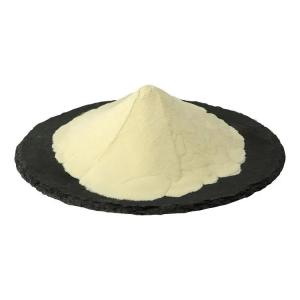News list
News Center
Hot Product
News
Phosphoric acid in the dialogue of core nutrients
Time:2025-10-15
1. Introduction
Phosphoric acid (H₃PO₄) occupies a significant place in the modern understanding of nutrition and biochemical balance. While commonly recognized as a food additive and acidity regulator, its deeper role in the dialogue of core nutrients—such as calcium, magnesium, and proteins—reveals its importance in both natural and industrial contexts of food science.
2. Phosphorus as a Fundamental Element
At the heart of phosphoric acid lies phosphorus, one of the essential elements in living organisms. Phosphorus contributes to the formation of vital biological molecules, including nucleic acids and phospholipids. In food science, phosphoric acid serves as a manageable and stable source of phosphorus, connecting chemical formulation with nutritional balance.
3. Interaction with Core Nutrients
Phosphoric acid interacts dynamically with other nutrients in food systems. Its presence influences mineral solubility, buffering capacity, and nutrient bioavailability. For instance, controlled levels of phosphoric acid can help maintain a balanced mineral ratio in complex food formulations, supporting the stability of calcium and magnesium compounds during processing and storage.
4. Technological Integration in Food Systems
Recent developments in food technology have enhanced the precision of nutrient management, and phosphoric acid plays a key role in this integration. Its adjustable acidity supports enzyme activity, fermentation control, and protein structuring. These properties allow food technologists to fine-tune the interaction between phosphoric acid and macronutrients for improved texture, consistency, and quality.
5. Balancing Functionality and Nutrient Harmony
The dialogue between phosphoric acid and core nutrients extends beyond chemical reaction—it reflects the balance between functionality and nutritional integrity. Modern research focuses on optimizing phosphoric acid concentration to maintain desired product qualities without disrupting the natural nutrient equilibrium. This scientific approach bridges chemistry and nutrition in a single framework.
6. Future Perspectives
The continuing exploration of phosphoric acid in the context of nutrient interaction promises new insights for sustainable food innovation. Researchers are investigating biocompatible phosphorus sources and developing analytical methods to understand how phosphoric acid mediates nutrient stability in complex food systems. This evolution places phosphoric acid as both a scientific tool and a nutritional connector.
7. Conclusion
Phosphoric acid stands as a vital participant in the dialogue of core nutrients. Its dual identity—both as a functional ingredient and as a chemical bridge between essential elements—reflects the intersection of food science, nutrition, and innovation. As understanding deepens, phosphoric acid will remain integral to maintaining harmony among the fundamental nutrients that sustain life.
Phosphoric acid (H₃PO₄) occupies a significant place in the modern understanding of nutrition and biochemical balance. While commonly recognized as a food additive and acidity regulator, its deeper role in the dialogue of core nutrients—such as calcium, magnesium, and proteins—reveals its importance in both natural and industrial contexts of food science.
2. Phosphorus as a Fundamental Element
At the heart of phosphoric acid lies phosphorus, one of the essential elements in living organisms. Phosphorus contributes to the formation of vital biological molecules, including nucleic acids and phospholipids. In food science, phosphoric acid serves as a manageable and stable source of phosphorus, connecting chemical formulation with nutritional balance.
3. Interaction with Core Nutrients
Phosphoric acid interacts dynamically with other nutrients in food systems. Its presence influences mineral solubility, buffering capacity, and nutrient bioavailability. For instance, controlled levels of phosphoric acid can help maintain a balanced mineral ratio in complex food formulations, supporting the stability of calcium and magnesium compounds during processing and storage.
4. Technological Integration in Food Systems
Recent developments in food technology have enhanced the precision of nutrient management, and phosphoric acid plays a key role in this integration. Its adjustable acidity supports enzyme activity, fermentation control, and protein structuring. These properties allow food technologists to fine-tune the interaction between phosphoric acid and macronutrients for improved texture, consistency, and quality.
5. Balancing Functionality and Nutrient Harmony
The dialogue between phosphoric acid and core nutrients extends beyond chemical reaction—it reflects the balance between functionality and nutritional integrity. Modern research focuses on optimizing phosphoric acid concentration to maintain desired product qualities without disrupting the natural nutrient equilibrium. This scientific approach bridges chemistry and nutrition in a single framework.
6. Future Perspectives
The continuing exploration of phosphoric acid in the context of nutrient interaction promises new insights for sustainable food innovation. Researchers are investigating biocompatible phosphorus sources and developing analytical methods to understand how phosphoric acid mediates nutrient stability in complex food systems. This evolution places phosphoric acid as both a scientific tool and a nutritional connector.
7. Conclusion
Phosphoric acid stands as a vital participant in the dialogue of core nutrients. Its dual identity—both as a functional ingredient and as a chemical bridge between essential elements—reflects the intersection of food science, nutrition, and innovation. As understanding deepens, phosphoric acid will remain integral to maintaining harmony among the fundamental nutrients that sustain life.


 CN
CN





